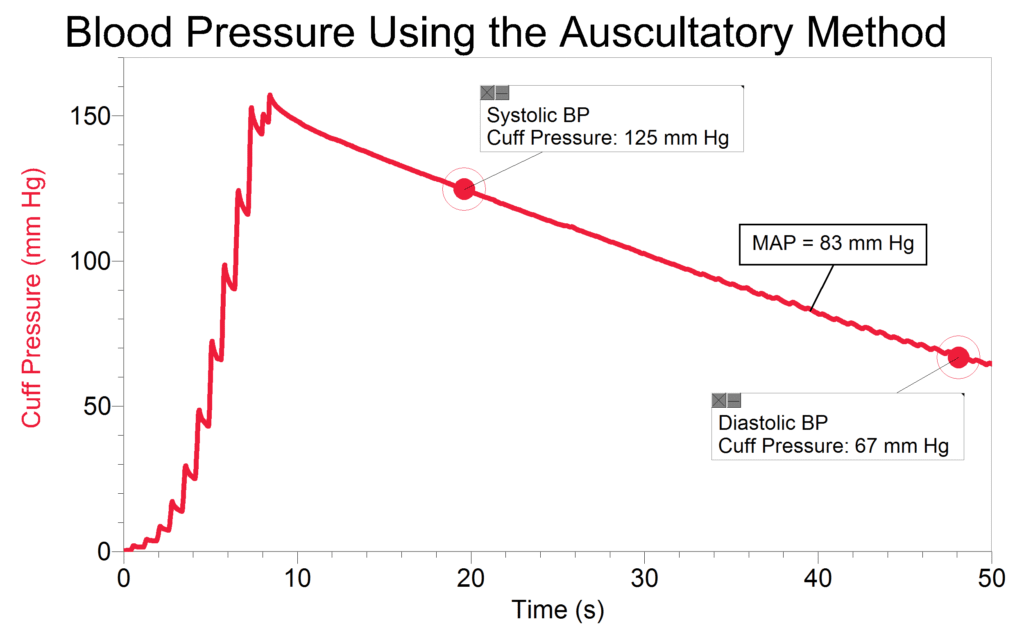Laura Cerletty, a physiology teacher at Whitnall High School in Greenfield, WI, and Stephen Biscotte, a physiology teacher at Cave Spring High School in Roanoke, VA , have developed an innovative way to compare two methods of measuring blood pressure using Vernier products. The Data Mark feature in Logger Pro and LabQuest app makes this possible.
The most common method of measuring blood pressure is called the auscultatory method. In this method, a stethoscope is used to listen for pulsations in the brachial artery as pressure is released from a blood pressure cuff. The pressure when the first pulse is heard is the systolic blood pressure. As the pressure is released from the cuff, the pulses in the artery become less audible. The pressure at which the pulse can no longer be heard is the diastolic blood pressure. The Data Mark feature of Logger Pro or LabQuest app is used to mark the systolic and diastolic pressures as air is released from the cuff.
The method that most automated blood pressure devices, including the Blood Pressure Sensor, use to calculate blood pressure is called the oscillometric method. This method is based on the principle that blood pumped through the arteries by the heart causes the arterial walls to flex. When a cuff is placed around the upper arm and is inflated and then deflated at a constant rate, arterial pressure pulses form. These pressure pulses can be detected in the pressure cuff using a pressure sensor. The peak-to-peak amplitude of each pulse increases and then decreases as the pressure in the cuff decreases. The cuff pressure that corresponds with the largest pressure pulse corresponds with the mean arterial pressure. The systolic and diastolic blood pressures are then calculated using an algorithm built into the software.

As shown in the data above, you can easily compare these two methods.
Download lab instructions for computers and LabQuest.
If you have any questions about this exercise or other physiology experiments, contact our Biology Staff Scientist, John Melville, at physiology@vernier.com
